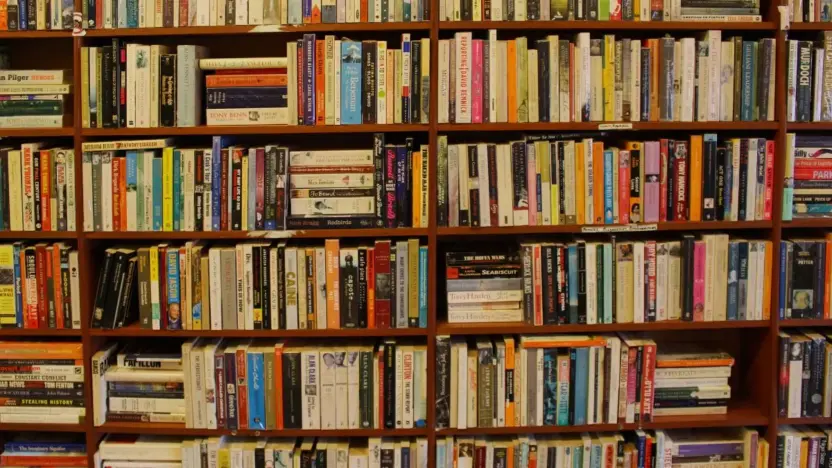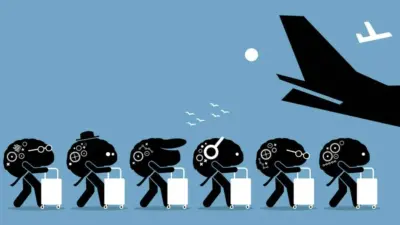Beyond Borders: In our increasingly interconnected world, literature serves as a vibrant tapestry, weaving together diverse thoughts, ideas, and cultures. At the heart of this global conversation lie the Influence of Translated Works and Foreign Authors, who not only bridge geographical distances but also transcend cultural barriers. Translated literature takes readers on a journey beyond their linguistic confines, enabling them to explore foreign landscapes, traditions, and philosophies. Whether it’s a gripping Japanese manga series, a soul-stirring Russian novel, or a Bollywood adaptation of a Shakespearean play, translated works offer a gateway to new worlds, unlocking a treasure trove of creativity and wisdom.
Beyond Borders: The Influence of Translated Works and Foreign Authors
Historical Perspective
Translation is no modern invention; it has been a vital part of human civilization for thousands of years. As societies and cultures have grown and interacted, the need to understand each other’s written texts has necessitated the practice of translation.
- Ancient Beginnings: The translation of texts can be traced back to ancient Mesopotamia, where scholars translated Sumerian texts into Akkadian. In the Western world, the translation of Greek and Latin classics laid the groundwork for European intellectual thought.
- Indian Influence: India’s rich literary heritage has had an impact far beyond its borders. The translation of Sanskrit works like the “Mahabharata” and “Bhagavad Gita” into various languages has spread Indian philosophy and storytelling techniques to different cultures.
- Arabic Golden Age: During the Islamic Golden Age, Arabic scholars translated Greek, Persian, and Indian works into Arabic. These translated texts later made their way into Europe, playing a key role in the Renaissance.
- The Renaissance and Beyond: The European Renaissance saw the translation of Greek and Roman works into the vernacular languages of Europe. This period marked a significant democratization of knowledge, making literature accessible to a broader audience.
- East Meets West: The 18th and 19th centuries saw a burgeoning interest in Asian literature in the West. Works like “The Tale of Genji” from Japan were translated and introduced to Western readers, leading to a greater appreciation of Eastern thought and aesthetics.
- Comics and Popular Culture: The translation of comics and graphic novels, such as Tintin and Asterix, in the 20th century helped forge a shared popular culture, bringing joy and entertainment across linguistic boundaries.
- Global Literary Movement: The 20th and 21st centuries have seen a growing trend of translated works reaching global audiences. Authors like Gabriel García Márquez and Haruki Murakami have become household names, regardless of the readers’ native languages.
Influence on Modern Literature
The role of translated works and foreign authors in shaping modern literature is both profound and multifaceted. In an age where boundaries are blurring, the translation of literary works has become a driving force in fostering creativity and connecting cultures. Here’s how:
- Global Reach of Iconic Authors: Authors like Gabriel García Márquez, Haruki Murakami, and Franz Kafka have become global sensations, transcending linguistic barriers. Their unique styles and narratives have inspired new literary movements and resonate with readers across the world.
- Manga and Graphic Novels: The influence of Japanese manga and other graphic novels has created a cultural phenomenon. Translated into numerous languages, they have reshaped the way stories are told and consumed, especially among younger readers in both the US and India.
- Bollywood and Global Cinema: The adaptation of foreign novels into Indian cinema, such as “Othello” into “Omkara,” highlights the cultural exchange facilitated by translation. Conversely, Indian novels like “The White Tiger” have found their way to international screens.
- Cross-Cultural Genres and Themes: Genres like magical realism and existentialism, often found in translated works, have opened new avenues for literary exploration. Themes of love, loss, identity, and struggle resonate universally, regardless of cultural origin.
- Translation and Literary Awards: The increased recognition of translated works through awards like the Man Booker International Prize and the National Book Award for Translated Literature reflects a growing appreciation for the artistic value of translation.
- Literary Festivals and Collaboration: International literary festivals and cross-cultural collaborations between authors and translators are promoting a more inclusive literary community, celebrating diversity and encouraging creativity.
- Access to Regional Literature: In countries like India, translation within various languages has provided access to regional literary gems. Works written in Bengali, Tamil, Telugu, and other languages have reached readers across the country and beyond.
- Digital Platforms and E-books: The rise of digital platforms has made translated works more accessible than ever before, allowing readers to explore foreign literature at their fingertips.
Cultural Exchange Through Translation
The power of translation extends beyond mere words on a page; it is a tool for cultural diplomacy, a bridge connecting civilizations, and a means to foster mutual respect and understanding. Let’s explore how translation has facilitated cultural exchange:
- Building Bridges Between Cultures: Translation allows readers to delve into the hearts and minds of people from diverse backgrounds. Whether it’s an Indian reader engrossed in a Spanish romance or an American teenager exploring Japanese manga, translated works create connections that transcend geographical boundaries.
- Understanding and Appreciation: By making foreign literature accessible, translation helps in breaking stereotypes and promotes a nuanced understanding of different cultures. It enables readers to appreciate the uniqueness and commonality of human experiences across the world.
- Influence on Art and Music: The translation of poetry, plays, and novels has inspired artists and musicians globally. From Bollywood’s adaptations of Shakespeare to Western music influenced by Indian classical traditions, the cultural exchange is palpable and inspiring.
- Language Preservation and Revitalization: Translation plays a key role in preserving indigenous and minority languages. By translating works into and from these languages, it helps in keeping them alive and relevant.
- Educational Impact: In academic settings, translated works are essential for comparative studies, interdisciplinary research, and global awareness. They enrich curricula and encourage students to think critically about the world beyond their immediate environment.
- Economic and Business Collaboration: Translation has also facilitated international trade, business collaborations, and tourism. The ability to understand and communicate across languages has opened doors for economic opportunities and partnerships.
- Case Studies: Cross-Cultural Collaboration:
- Bollywood and Western Cinema: Collaborations and influences between Indian cinema and Hollywood showcase the fusion of storytelling techniques, themes, and artistic expressions.
- Manga Influence on Western Comics: The style and storytelling of Japanese manga have influenced Western comic book creators, leading to a blend of visual aesthetics and narrative structures.
- The Role of Translators: Translators are the unsung heroes of cultural exchange. Their meticulous work, understanding of cultural nuances, and dedication to authenticity make this exchange possible and meaningful.
- Challenges and Sensitivity: Cultural exchange through translation is not without challenges. It requires sensitivity to cultural norms, idiomatic expressions, and potential misunderstandings that can arise from differing contexts.
Challenges in Translation
While translation has been instrumental in connecting cultures and broadening literary horizons, it is not without its challenges. The process of translating a work from one language to another can be fraught with complexities, both technical and cultural. Here’s a look at some of these challenges:
- Linguistic Nuances and Idiomatic Expressions: Every language has its unique idioms, metaphors, and expressions. Translating these accurately without losing their original flavor can be a daunting task.
- Cultural Sensitivity: Cultural references, humor, and social norms can vary widely between cultures. A translator must be mindful of these differences to avoid misinterpretation or offense.
- Maintaining the Author’s Voice: Capturing the author’s unique voice, style, and tone in translation requires a deep understanding of both the source and target languages, as well as the author’s intent.
- Technical Challenges in Comics and Visual Media: Translating comics, graphic novels, and visual media presents unique challenges. Visual elements, space constraints, and the integration of text with imagery require careful consideration.
- Accessibility and Regional Diversity: In countries like India, where numerous languages and dialects coexist, translating works to cater to regional preferences without losing universality can be complex.
- Legal and Ethical Considerations: Copyright laws, permissions, and ethical considerations around the original work must be navigated with care. This is especially relevant in the entertainment industry, where adaptations and translations are common.
- Quality Control: Ensuring quality in translation is vital. This includes not just linguistic accuracy but also coherence, readability, and aesthetic appeal, particularly in the context of literary works.
- Technological Limitations: While technology has aided in translation, machine translation still falls short of capturing the subtleties and emotional nuances of human creativity. Human expertise remains irreplaceable.
- Market Considerations: Tailoring translations for specific markets, such as the US and India, requires an understanding of local tastes, preferences, and cultural norms, especially in sectors like entertainment and popular literature.
- Financial Constraints: High-quality translation often requires significant investment in skilled translators, editors, and resources. Balancing cost and quality can be a challenge, particularly for independent authors and smaller publishers.
Conclusion
In a world that is continually growing closer yet remains beautifully diverse, the role of translation in bridging gaps and fostering connections cannot be overstated. From the ancient tapestries of human civilization to the vibrant pages of modern comics, translated works and foreign authors have played a pivotal role in shaping our global literary landscape.
The historical evolution, the profound influence on modern literature, the thrilling cultural exchanges, and the intricate challenges faced all narrate a story that goes far beyond mere words. It’s a story of empathy, creativity, collaboration, and a shared love for storytelling that transcends boundaries.
As we’ve seen, translation is not merely a mechanical process of converting words from one language to another. It’s an art form, a cultural dance that requires finesse, understanding, and a deep appreciation for both the similarities and differences that make our world a rich tapestry of human expression.
Whether it’s an Indian reader exploring European classics, an American teenager diving into Japanese manga, or a Bollywood lover enjoying an adaptation of a Shakespearean play, the world of translated works offers a gateway to explore, learn, and grow.
In the fields of comics, books, and entertainment, where creativity knows no bounds, translation acts as a catalyst for innovation, a mirror reflecting our global society, and a bridge to a more inclusive, connected, and empathetic world. It’s a celebration of the diverse voices that resonate with readers in the US, India, and beyond, painting a colorful picture of our shared humanity.
Also Read: Navigating Brain Drain: Strategies for Countries to Retain Talent and Foster Innovation



